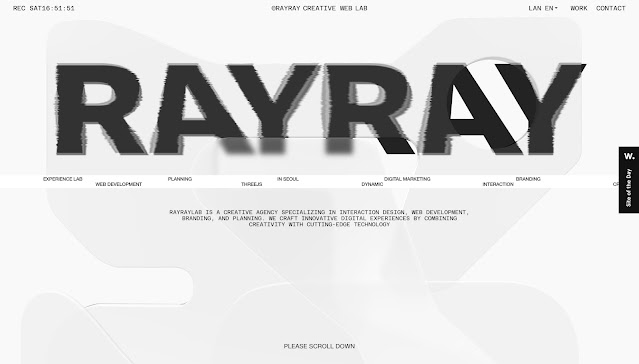Video & Sound Production | Exercises
21/4/25 - 28/5/25 (Week 1 - Week 3)
Kimberly Miaw Jya Nee | 0366836
Bachelor of Design (Honours) in Creative Media | Taylor's University
Video & Sound Production
Exercises
[Table of Contents]
1.
Lectures
2. Week 1
3.
Week 2
4.
Week 3
5. Week 4
[Lectures - Asynchronous Study]
Week 1 (21/4/25)
Basics of Cinematography
- Shot Size
- Camera Angle
- Composition
Shot Size
- The amount of space that is visible within a single shot or frame
- Different shot sizes can be used to convey different types of information or create different emotional effects
- Close-up shot shows a small area of the scene in great detail and is often used to emphasise a character's emotions or reactions
- Wide shot shows a larger area of the scene and is often used to establish the setting or context
Reading: https://www.studiobinder.com/blog/ultimate-guide-to-camera-shots/#shot-size
Video: https://youtu.be/AyML8xuKfoc?si=_xLVEotEBZG9VQk2
Video: https://youtu.be/AyML8xuKfoc?si=_xLVEotEBZG9VQk2
Camera Angle
- The position of the camera in relation to the subject being filmed
- Different camera angles can be used to create different perspectives and convey different types of information
- High-angle shot looks down on the subject from above and can create a sense of vulnerability or powerlessness
- Low-angle shot looks up at the subject from below and can create a sense of power or dominance
Reading: https://www.studiobinder.com/blog/ultimate-guide-to-camera-shots/#camera-angles
Video: https://youtu.be/wLfZL9PZI9k?si=vr9Crx7oT86yrEbd
Video: https://youtu.be/wLfZL9PZI9k?si=vr9Crx7oT86yrEbd
Composition
- The arrangement of visual elements within a shot or frame.
- Can include the placement of characters or objects within the frame, the use of colour and lighting, and the balance and symmetry of the overall image
- Composition can be used to create visual interest, guide the viewer's eye, and convey meaning or emotion.
[Additional]
Composition:
1. https://youtu.be/GtPqDPhx-EI?si=z05Yj20285VtVVph
2. https://youtu.be/GKzdP8cupH4?si=OFQlQPTBil46wgi0
Composition:
1. https://youtu.be/GtPqDPhx-EI?si=z05Yj20285VtVVph
2. https://youtu.be/GKzdP8cupH4?si=OFQlQPTBil46wgi0
Framing
Reading:
https://www.studiobinder.com/blog/ultimate-guide-to-camera-shots/#camera-framing
Video: https://youtu.be/qQNiqzuXjoM?si=uMiCewr3kG-jVfsm
Video: https://youtu.be/qQNiqzuXjoM?si=uMiCewr3kG-jVfsm
Week 2 (28/4/25)
Framing & Storyboard
The three-act story structure is a popular narrative framework used in
storytelling, particularly in film and literature.
- The Setup
- The Confrontation
- The Resolution
Act One: The Setup
- The first act establishes the protagonist, their world, and the situation they find themselves in
- This act typically ends with an inciting incident, which sets the story in motion and creates a problem that the protagonist must solve
- The inciting incident can be a positive or negative event, but it must be significant enough to disrupt the protagonist's world and force them to take action
Act Two: The Confrontation
- The second act is the longest and most complex of the three acts
- It's where the protagonist faces a series of obstacles and challenges as they work towards their goal
- This act is often divided into two parts: the first half, where the protagonist makes progress towards their goal, and the second half, where they encounter setbacks and complications
- The second act typically ends with a major turning point, where the protagonist faces a significant setback or crisis that forces them to reevaluate their approach
Act Three: The Resolution
- The third act is where the story reaches its climax and resolution.
- The protagonist must confront their final challenge or conflict and overcome it in order to achieve their goal
- The climax is the most intense and dramatic part of the story, where the stakes are highest and the tension is at its peak
- The resolution, on the other hand, is the denouement, where loose ends are tied up, and the protagonist's journey comes to a satisfying conclusion
Overall, the three-act story structure provides a clear and effective
framework for storytelling, allowing writers to create engaging and
well-structured narratives that resonate with audiences.
Reading: https://www.studiobinder.com/blog/three-act-structure/
Video: https://youtu.be/tvqjp1CxxD8?si=sgTSKNpGdkeSKgbq
Reading: https://www.masterclass.com/articles/how-to-write-three-act-structure
Week 3 (5/5/25)
Storyboarding
Storyboards are used to plan shots, understand the narrative flow, and to communicate ideas to the production team. They can include details such as camera angles, character movements, dialogue, and even notes about special effects or sound. This helps the director, cinematographer, and other crew members visualise the scenes and prepare for the shooting process.
Storyboarding is a crucial part of the pre-production process because it allows filmmakers to experiment with different visual approaches, identify potential problems, and make necessary adjustments before the actual filming begins, saving time and resources.
Week 1: Editing Exercises
For our first class, we did two simple exercises using Adobe
Premiere Pro to familiarise ourselves with workflow of the
software.
Both of these exercises required us to use the video clips provided and
properly arrange them in order to turn them into complete videos.
Exercise 1 - Mints
Fig. 1. W1 Exercise 1 Video - Mints Ad
Exercise 2 - Doritos
Fig. 2. W1 Exercise 2 Video - Doritos Ad
Week 2: Exercises
This week in class, we did group shooting practice with eight different
shot types. We then have to edit them into one video + add captions for
each shot size.
- Close-Up Shot
- Frontal MCU (soft background)
- Frontal MS (soft background)
- Extreme Close-Up Shot
- Side angle MS (soft background)
- 3/4 Angling MCU shot (with blurry / soft foreground)
- Low Angle Wide shot
- Eye-Level Medium-Wide Shot
Exercise 1 - Shooting Practice, Shoot & Editing
Exercise 2 - Editing Practice 1 (Lalin)
For our second exercise, we had to edit a short film titled Lalin.
We had to trim the footages into 35 seconds sharp.
Week 2 Quiz Results
Week 3: Shooting Exercise 2
This week we did another shooting exercise, with 5 different types of
shot this time. We shot the videos in groups as well.
1. Deep Focus
2. O.S 01
3. O.S 02
4. Tight M.S Side Angle
5. Tight M
Fig. 3. Editing Process of Shooting Exercise 2 Video in Premiere
Pro
Week 4: Production
Week 4 Quiz Results
Thank You











Comments
Post a Comment